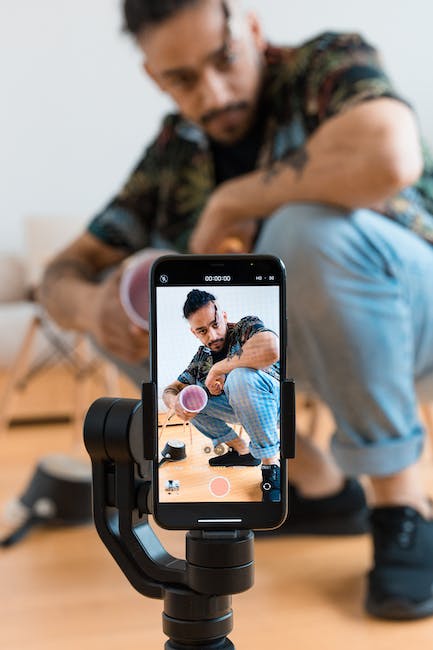Bespoke Screen Recording Software
What is Screen recording software?
Screen recording software is an essential tool for businesses that require presentations, tutorials or training videos. It is a software that can capture everything that is happening on your screen, as well as your audio and webcam footage. A bespoke software development provides this functionality that is customized to meet the specific needs and requirements of the business.Contact us if you are wanting to have a bespoke Screen Recording application developed?
With screen recording software, businesses can create engaging content that showcases their products or services, helping them to connect with their target audience. Businesses can use this software to create software demos, product walkthroughs or training videos for their employees or clients. For example, now TV screen recording software could be used for creating an instructional video to teach users how to use the platform and its features.
Moreover, this software can also be used to improve communication within the team. Businesses can create videos that provide updates on projects or show progress to stakeholders. It can also help in troubleshooting issues as employees can share the screen footage and record what is happening while addressing an issue. In addition, it can help in minimizing travel costs for remote teams by allowing for virtual meetings and training.
Overall, the uses of screen recording software are vast and can be customized based on a business's needs. By using a bespoke software development company, businesses can ensure that the software is tailored to their specific needs and requirements, allowing them to improve their communication, collaboration and training processes.

What are the main functions of Screen recording software?
The main modules that comprise screen recording software include:1. Screen Capture Module: This module is responsible for capturing the images or videos of the screen as and when required. It captures the user's actions, such as clicks, keystrokes, and movement, ensuring that the recording reflects the user's experience.
2. Audio Recording Module: This module captures the audio input from the user's microphone or system audio. It enables users to record voiceovers, narrations, or any other audio-related content along with the video.
3. Editing Module: This module provides basic video editing functions, such as trimming, clipping, and adding annotations or text overlays. It allows users to refine their videos and create a more professional output.
4. Encoding Module: This module compresses and encodes recorded videos into different video formats and resolutions. It ensures that videos can be played smoothly and efficiently across all devices and platforms.
5. Sharing Module: This module enables users to share their recorded videos directly to various social media platforms or cloud storage services. It simplifies the process of sharing recordings and helps users to leverage their content for marketing or educational purposes.
Overall, screen recording software provides multi-functional capabilities that enable users to create compelling and informative video content. From capturing the user's actions to editing and sharing videos, screen recording software empowers users to create their own custom video solutions tailored to their needs.
Data / systems integration
Screen recording software or its data is often integrated with various types of systems such as video conferencing software, e-learning platforms, content management systems, customer relationship management tools, and live streaming platforms.APIs, software development kits (SDKs), webhooks, or plugins are some of the tools used for integrating screen recording software with other systems. The choice of tool largely depends on the type of system being integrated with, its compatibility requirements, and the complexity of the integration.
Considerations for integrating screen recording software with other systems may include security, data privacy, performance, scalability, and user experience. For instance, the integration should be designed in a way that ensures the security of data being transmitted between systems, and also adheres to relevant data privacy regulations such as GDPR. The performance of the integrated system should be optimized to minimize latency and ensure smooth user experience, even when handling large volumes of screen recording data. Scalability should also be factored in to ensure that the system can effectively handle increased data usage and user traffic without degrading performance.
In summary, screen recording software integration with other systems is critical in ensuring that businesses can make the most of their data and maximize efficiency across their operations. The integration process requires careful consideration of various factors to ensure the successful implementation of an effective, secure, and user-friendly solution.
Who uses Screen recording software?
Organizations across various verticals and sizes use screen recording software in their day-to-day operations. Small businesses, medium-sized enterprises, and large corporations alike use screen recording software for a wide variety of purposes. For instance, businesses in the education sector use screen recording software to create training materials, while digital marketing agencies use it to create video content for their clients. Healthcare providers use screen recording software for telemedicine consultations and to train new employees.Screen recording software is also popular among software development companies that create tutorials for their products. Additionally, screen recording software is used in the entertainment industry for recording live TV shows and games. This means that organizations of all types and sizes can benefit from custom screen recording software, regardless of their industry or niche.

Benefits of Screen recording software
Organizations use screen recording software for a variety of reasons, but primarily to improve productivity and efficiency within their operations. By recording employee screens during work, managers and supervisors can analyze data to identify areas where employees could improve, provide feedback to employees, and develop better training programs.Additionally, screen recording software is valuable for quality control purposes. By recording customer interactions with employees, managers can analyze the interactions to identify areas where employees could improve their customer service skills. The software can also be used to monitor compliance with industry regulations and company policies.
Screen recording software also has the potential to improve collaboration and communication within a team. Employees can easily share their screens with colleagues to demonstrate a process, provide feedback, or brainstorm ideas. This can save time and increase productivity by eliminating the need for in-person meetings.
Overall, the key benefits of screen recording software are increased productivity, improved quality control, and better collaboration and communication within teams. It is a valuable tool for any organization looking to streamline their operations and provide better customer service.
Some of the players in the Screen recording software market
Some of the main brands of screen recording software include Camtasia, Snagit, OBS Studio, Screencastify, Loom, Bandicam, and Movavi Screen Recorder.Camtasia is a popular screen recording software that offers advanced editing features and the ability to add animations and effects to videos. However, some customers have reported that the software can be slow or buggy at times.
Snagit is another well-known brand that offers both screen recording and image capture capabilities. It is known for its ease of use and customizable hotkeys, but some users have reported issues with audio recording quality.
OBS Studio is a free and open-source screen recording software with advanced features like live streaming and the ability to record multiple sources simultaneously. However, its interface can be overwhelming for some users and there may be a learning curve involved in mastering its features.
Screencastify is a screen recording tool that is popular among educators and offers features like webcam recording and Google Drive integration. It is known for its ease of use and compatibility with various devices and operating systems, but some users have reported issues with video quality on occasion.
Loom is a relatively new screen recording tool that offers both desktop and mobile versions with features like zoom and drawing tools. It is popular for its simplicity and ease of use, but some users have reported issues with exporting videos.
Bandicam is a screen recording software that also offers the ability to capture gameplay footage. It is known for its high-quality video output, but some users have reported issues with the software crashing during recording.
Movavi Screen Recorder is a customizable screen recording software that offers video editing features like trimming and cutting. It is known for its ease of use and compatibility with various devices and operating systems, but some users have reported issues with the software freezing or crashing during recording.
When considering developing a custom screen recording software, it is important to consider these brands and their strengths and weaknesses, as well as the specific needs and requirements of your business. Creating a custom solution can offer unique advantages and eliminate some of the shortcomings of existing software options.
Benefits of off-the-shelf Screen recording software
Some of the main benefits of off-the-shelf screen recording software include ease of use, affordability, and a wide range of functionalities. With ready-made software, businesses can quickly and easily start recording and sharing their screens without having to spend time or money on custom development. Many off-the-shelf options also come with comprehensive features such as editing tools, multiple format support, and integrations with other software, making them a versatile option for businesses of all sizes. Additionally, off-the-shelf software is often developed and tested by a team of experts, ensuring that it is reliable and secure.Limitations of off-the-shelf Screen recording software
Off-the-shelf screen recording software can be a useful tool for basic screen recording needs. However, there are certain limitations to this software that can impede productivity and hinder growth for businesses.One of the significant limitations of off-the-shelf screen recording software is that it lacks customization options. Screen recording software that caters to a broader market may not be compatible with specific software, hardware, or plugins required by a business. For instance, a company may require a screen recording software that records in high-resolution format or one that is compatible with a particular browser or operating system. In such cases, off-the-shelf screen recording software may not deliver the desired results and individual needs of the business.
Another limitation of off-the-shelf screen recording software is its inability to offer extended functionality to users. For example, many screen recording tools only allow for simple on-screen recording and playback, and lack the ability to add custom annotations, effects, and filters required for more comprehensive video editing needs. This limitation can also negatively impact the quality of output and increase the time taken to process videos.
Additionally, off-the-shelf screen recording software is typically limited in terms of security features. Many businesses require a highly secure screen recording software to protect their sensitive data from unauthorized access or cyber threats. Such features are often not easily found in standard screen recording software, making it challenging for businesses to rely on them for their security needs.
Lastly, off-the-shelf screen recording software comes with a limited range of support options. Businesses who require technical troubleshooting or assistance may not receive immediate support when faced with certain challenges. This delay has the potential to cause considerable disruptions in workflow, leading to lost time and investment.
In summary, while off-the-shelf screen recording software may be sufficient for basic needs, they do come with limitations in crucial areas such as customization, functionality, security, and support. For businesses looking to achieve specific goals and requirements, custom screen recording software is an ideal solution that is tailored to meet their needs effectively.
Is bespoke Screen recording software a viable option?
Bespoke or partially bespoke screen recording software has numerous benefits that can boost the efficiency and productivity of any business. These benefits would be difficult to achieve with off-the-shelf software that does not take into account the unique needs of the user. Here are some successful use cases and the benefits that were enjoyed:1. Training and Onboarding: A large retailer was struggling to train new employees remotely. They needed a software that could provide interactive training and allow managers to track employee progress. A bespoke screen recording software was developed that allowed the creation of interactive training modules with customized quizzes and assessments. The software also allowed managers to track employee progress and provide feedback. The result was a more engaged and knowledgeable workforce that performed better on the job.
2. Customer Support: A tech company needed to improve its customer support by providing more visual aids to customers. A partially bespoke screen recording software was developed that allowed support agents to quickly record and share their screens with customers. The software also allowed agents to overlay annotations and highlight important areas of the screen. The result was improved customer satisfaction and faster resolution times.
3. Quality Assurance: An aerospace manufacturer needed to improve its quality assurance process by recording and analyzing the entire production process. A bespoke screen recording software was developed that allowed engineers to record and analyze the entire production process. The software also allowed engineers to easily tag and annotate important parts of the process. The result was improved product quality and a more efficient production process.
In conclusion, bespoke or partially bespoke screen recording software can provide numerous benefits to businesses including improved efficiency, productivity, and performance. The key is to work with a software development company that has a high degree of expertise and detailed market knowledge in screen recording software.

Fun facts about Screen recording software
Screen recording software has seen a considerable surge in popularity in recent years. According to a survey conducted by TechSmith, over 91% of professionals use screen recording software regularly. This software enables individuals to capture and record their computer screens, enabling them to create video tutorials, demo videos, or even record webinars.One of the most significant trends in the world of screen recording software is the shift towards cloud-based solutions. Organizations are looking to leverage cloud-based screen recording software to store and share recordings on the fly, from anywhere and on any device. This shift is attributed to the convenience, cost-effectiveness, and scalability that cloud-based solutions offer.
The rise of e-learning, remote work, and video content creation has also made screen recording software increasingly popular. There is an ever-growing need for video-based content and training modules in industries ranging from education and healthcare to IT and customer service.
When looking for screen recording software, businesses should consider features such as editing capabilities, quality of the recording, and compatibility with platforms such as Windows, macOS, and iOS. Additionally, software that supports annotations, live streaming, and integrations with third-party applications such as PowerPoint can provide an edge.
In conclusion, custom screen recording software can be an excellent investment for businesses looking to boost their training programs, create marketing videos, or enhance their customer service. The trend towards cloud-based solutions and the growing need for video-based content make screen recording software a must-have tool for businesses in many industries.
Screen recording software FAQ
1. How can a custom screen recording software benefit my business?A: A custom screen recording software can offer various benefits to your business, including the ability to provide remote training and support, improve collaboration among employees, capture user feedback and behavior, and increase productivity by automating repetitive tasks.
2. What features should I consider including in my custom screen recording software?
A: The features you should consider including in your custom screen recording software depend on your specific business needs. Some commonly requested features include integrated video editing tools, personalized branding options, automatic updates, and the ability to capture audio and webcam footage.
3. How long does it take to develop a custom screen recording software?
A: The development timeline for a custom screen recording software varies depending on the complexity of the project, the number of features required, and the resources available. A development team will typically work closely with you throughout the development process to ensure that the final product meets your specific requirements.
4. What platform should I choose for my custom screen recording software?
A: The platform you choose for your custom screen recording software ultimately depends on your business needs and your target audience. Some popular platforms include Windows, Mac, and mobile devices such as iOS and Android.
5. How can I ensure the security of my custom screen recording software?
A: The security of your custom screen recording software should be a top priority during development. This includes implementing secure coding practices, conducting regular security assessments, and maintaining strict access controls to protect user data.
6. How do I provide support and maintenance for my custom screen recording software?
A: Support and maintenance for your custom screen recording software should be built into the development process. This includes providing ongoing technical support, troubleshooting issues, and providing regular software updates to ensure that the software remains functional and secure.
7. What are the development costs associated with creating a custom screen recording software?
A: The development costs for a custom screen recording software vary depending on the scope of the project, the development team's expertise, and the resources required. It's important to work closely with your development team to determine a realistic budget that meets your specific needs and objectives.
Next Steps?
Are you considering having custom screen recording software developed for your business? Or do you need some assistance with systems integration or data migration? Look no further! Our team of experts has the knowledge and experience to deliver top-notch solutions tailored to your specific needs. Don't settle for off-the-shelf software that doesn't fully meet your requirements - let us create a custom solution that will streamline your processes and improve your bottom line. Contact us today and let's discuss how we can transform your business with bespoke software development.Read more about the main software category Entertainment Applications.
Other services in Entertainment Applications category:
Want a quick quote for the development of custom Screen Recording Application?
Contact us to discuss your questions about bespoke Screen Recording Applications.
